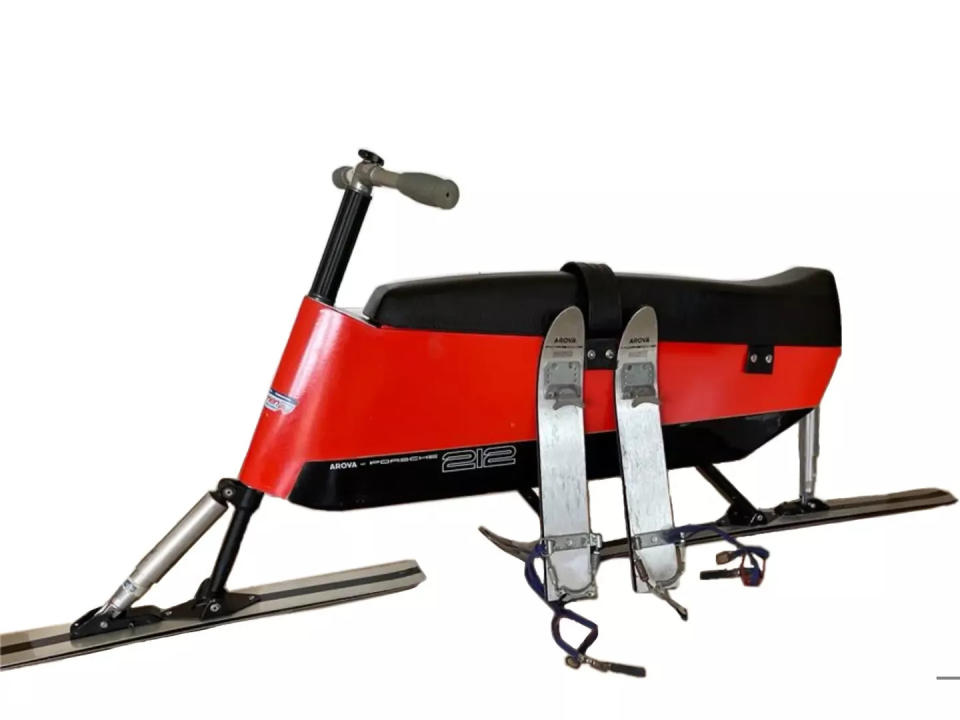10 F1, Other Race Cars Being Sold from Jody Scheckter’s Collection
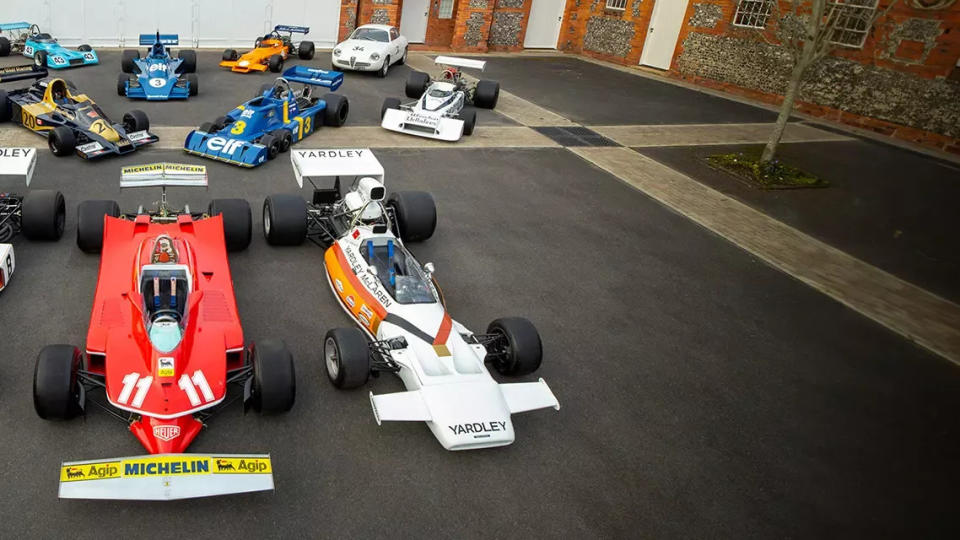
The RM Sotheby's Monaco Auction always has the best stuff and this year is no exception. Headlining the whole show May 10-11 is a collection of great race cars owned by 1979 Ferrari F1 champion Jody Scheckter, including a very rarely seen Tyrrell six-wheeler. But, in addition to Scheckter's cars, there are also delightful little Alfa Romeos, Lancias, and some sort of sit-atop ski thing from Porsche.
The principality will host both the Grand Prix de Monaco Historique races and the RM Sotheby’s biennial Monaco auction, the latter for the seventh time. Once again hosted at the Grimaldi Forum, this year’s auction offers 115 automotive lots spread across two days of auction action, with hypercars like a McLaren Elva and an original Lamborghini Countach LPI 800-4.
"As the hammer falls to the sound of howling V-12 reverberating around the most famous city circuit in the world, there is truly no better place to be for those with petrol in their veins," said RM Sotheby's. And they ain't lyin'. Here are RM Sotheby's takes on our favorites from the upcoming auction, edited for space and clarity.
And don't worry about where to park your jet. The runway at Nice is 9711 feet and you can helicopter from thence to Monaco. Surely that's an acceptable weekend for you, mais oui?
1977 Tyrrell P34
Estimate: $480,000 - $695,000 No Reserve
One of the most unusual and sought-after F1 cars ever made came from the garages of the innovative Tyrrell F1 team. The six-wheeled P34 was a pet project of designer Derek Gardner, RM says. Gardner came up with the idea while he was working on four-wheel-drive systems for Indianapolis cars during the late-1960s.
A few years later, and with the majority of the Formula 1 grid using the same Ford-Cosworth DFV engine, he revisited the idea. His calculations showed that four small front wheels would offer a significant reduction in the aerodynamic drag generated by two standard wheels – equivalent, in fact, to having an extra 40 hp.
Goodyear agreed to make bespoke tires for the 10-inch front wheels, and the P34 was born. Patrick Depailler gave the P34 its debut at the 1976 Spanish Grand Prix and qualified 3rd on the grid, while teammate Jody Scheckter was down in 14th place in the old four-wheeled 007.
By the time of the Belgian Grand Prix, Scheckter also had a P34 and promptly finished 4th, then 2nd in Monaco—with Depailler following him home in 3rd. The P34’s crowning glory came in that year’s Swedish Grand Prix, where Scheckter qualified on pole position and went on to take a superb victory.
Depailler crossed the line in 2nd to complete a resounding one-two, a result that helped the team finish 3rd in that year’s Constructors’ World Championship. The team continued to race the P34 through 1977 with Depailler and Ronnie Peterson, but Gardner left that year, and in 1978 Tyrrell returned to a conventional four-wheeled layout for the 008.
Scheckter acquired this car about 10 years ago. “This Tyrrell P34 represents a rare chance to acquire one of the most iconic and instantly recognizable Formula 1 cars ever built,” RM says.
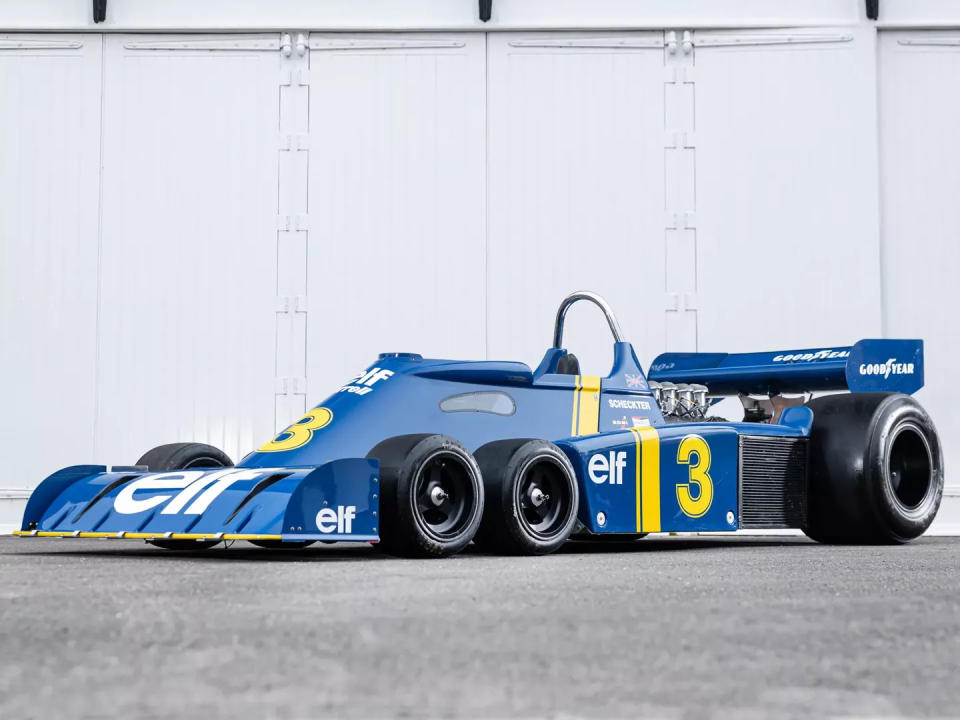
1979 Ferrari 312 T4
Estimate $5,600,000 - $7,000,000
The 312 T4 was Ferrari’s first full ground-effect car, an aerodynamic device that has dominated the sport ever since. The aerodynamic limitation for the Ferrari against its Ford-Cosworth DFV-powered competitors was the flat-12, which meant that floor did not feature wide venturis.
The competitive edge for the Maranello team was the transparent power and reliability of the Tipo 015 312 engine, with which teams like Williams, Lotus, and Ligier couldn’t compete. After five rounds of the 1979 Formula 1 World Championship, with Scheckter fourth in the championship, the South African got a new 312 T4, chassis number 040, for the Belgian Grand Prix at Zolder.
He won by 15 seconds and went on to win the championship, including a decisive victory at Monza, hallowed ground for Ferrari. This 312 has not been raced since 1979, and remains original to when it left the factory and has never been driven by anyone other than Jody Scheckter.
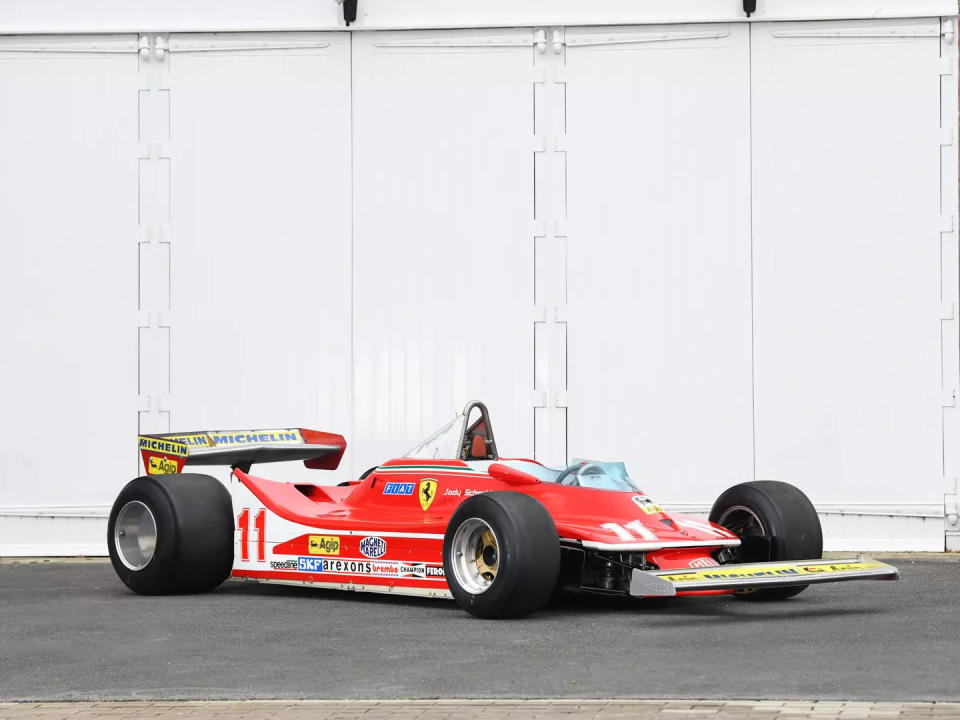
1971 McLaren M19A
Estimate $800,000 - $1,000,000 No Reserve
Still reeling from the death of Bruce McLaren at Goodwood in 1970, and without a Grand Prix win all year, the McLaren team faced myriad challenges over the winter of 1970 and into 1971.
In comparison to their superb M7A—a four-time Grand Prix winner across the 1968 and 1969 seasons—the outgoing M14 proved a relative disappointment, so considerable expectation was placed upon its replacement, this Ralph Bellamy-designed M19A.
Both longer and wider than the M14, the new-for-1971 model was immediately distinguishable by its exquisitely crafted “Coke bottle” monocoque chassis.
Chassis M19A-1 made its race debut seven weeks later in the South African Grand Prix, driven by Denny Hulme. A succession of drivers piloted this model, including Mark Donahue, David Hobbs, Peter Revson, Brian Redman, and, of course, Jody Scheckter, who now offers it for sale.
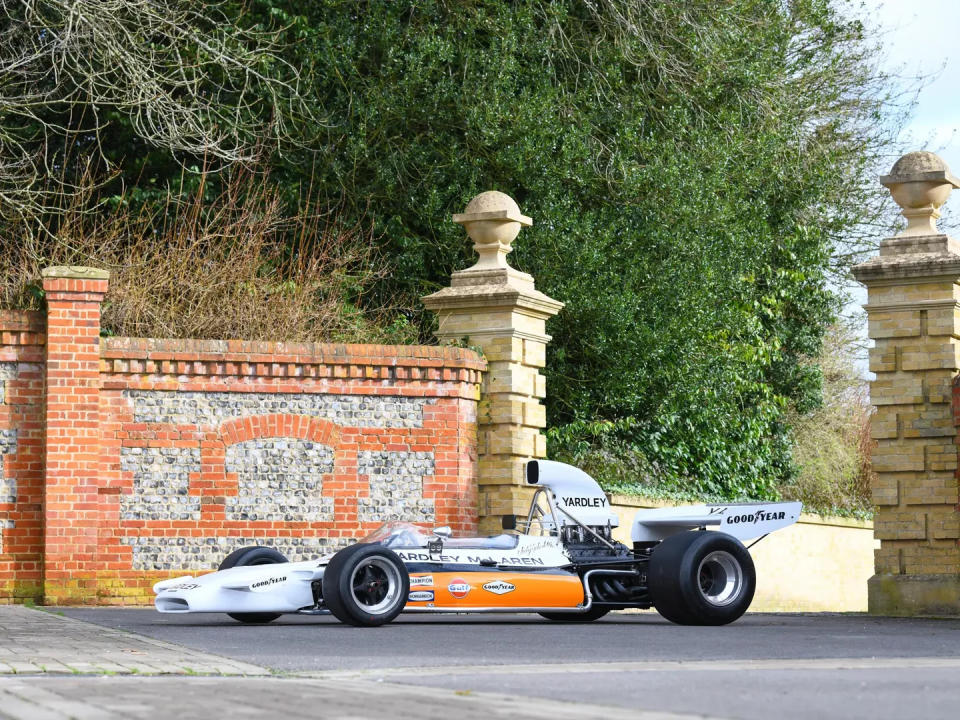
1972 McLaren M21
Estimate $140,000 - $213,000 No Reserve
Jody Scheckter drove an M21 to victory at the 1972 Formula 2 race in Crystal Palace, London. Chassis 2 was allocated for Jody Scheckter’s machine, and chassis 3 for Chris MacAllister. Scheckter has remained the sole owner of chassis 2 since the late-1990s, and the car is liveried in the famous McLaren Papaya Orange colors of his 1972 Formula 2 season.
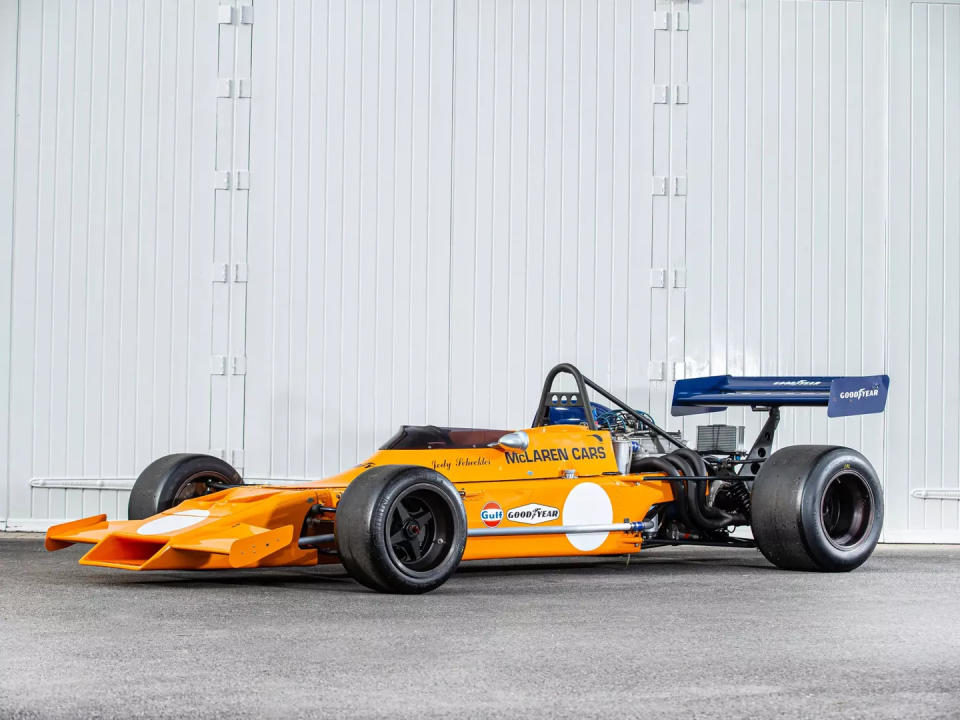
1973 McLaren M23
Estimate $1,900,000 - $2,400,000 No Reserve
Eager to improve on their 3rd-placed finishes in both the Drivers’ and Constructors’ Championships of 1972, McLaren started 1973 with its incumbent M19C chassis before introducing the new Gordon Coppuck-designed M23 from the third round of the Championship on.
The new car borrowed heavily from Coppuck’s Indianapolis 500-winning M16 design and followed the prevailing trends of wedge-shaped aerodynamics and integral side-mounted radiators; the latter compliant with the new deformable monocoque regulations applied to 1973-specification cars.
This M23 was Peter Revson’s race chassis for eight of the 15 rounds of that year’s World Championship season, with Revson securing fifth in the Drivers’ Championship behind Stewart, Fittipaldi, Peterson and Cevert.
The car raced in the 1974 and 1975 seasons, before being converted to F5000 spec and raced in that series in 1976-’78, before being converted once more to a central-seat Can Am specification. It was reacquired by McLaren and restored to its original DFV-engined specification for display in their burgeoning Heritage Collection. Thereafter it passed, appropriately, to its former driver Scheckter and has remained in his private collection since.
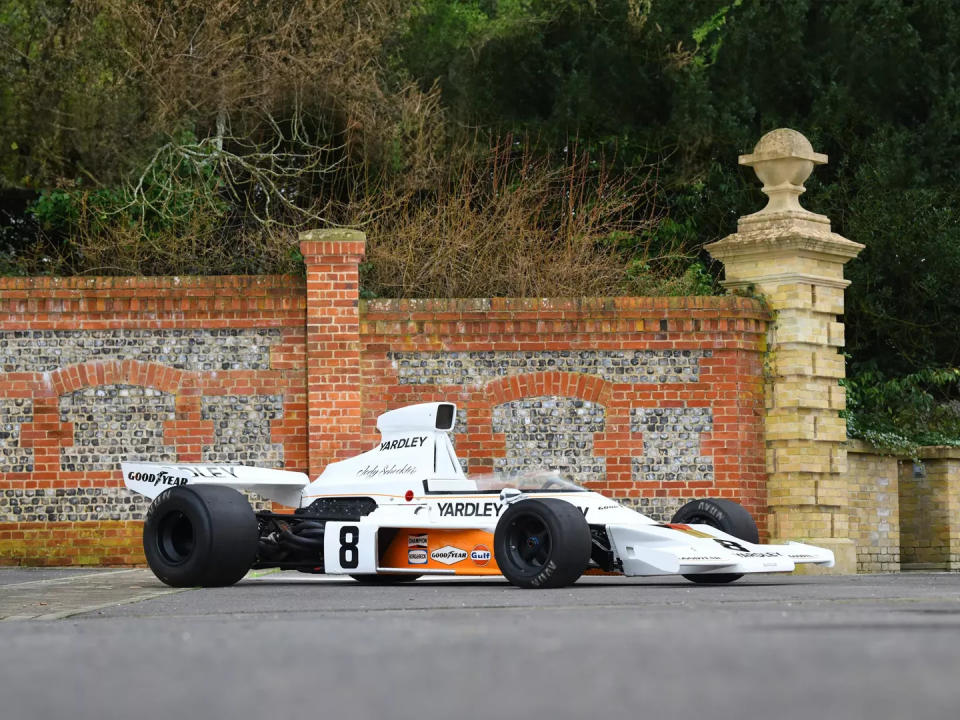
1975 Tyrrell 007
Estimate $700,000 - $1,000,000
The Tyrrell Formula 1 team was starting a new era as it looked ahead to the 1974 season. Its star driver, Jackie Stewart, had retired at the end of the previous year, and Ken Tyrrell had signed two drivers who would each be embarking on their first full season at the sport’s highest level: Frenchman Patrick Depailler and young charger Jody Scheckter, who had been one of the sensations of 1973 thanks to his pace in the Works McLaren M23.
The old 006 model was pressed into service for the “fly away” races in Argentina, Brazil, and South Africa that opened the season before the brand-new 007 Tyrrell you see here was introduced at the Spanish Grand Prix. The 007 was the work of designer Derek Gardner and was beautifully simple in its execution.
The biggest change from the 006 was a significant increase in its wheelbase, something that Jackie Stewart had championed in order to make it easier to drive than its twitchy predecessor. Powered by the ubiquitous Ford-Cosworth DFV engine, the 007 was competitive straight out of the box. Scheckter finished third in Belgium and second at Monaco, then won in Sweden, leading a Tyrrell one-two with teammate Depailler.
Scheckter followed up with another victory in the British Grand Prix at Brands Hatch, and remained in contention for the Drivers’ World Championship until the final round of the season. The 007 was carried over into the 1975 season, with Gardner’s latest upgrades including the relocation of the front brakes so that they were now outboard.
The first few races were a mixed bag for Scheckter, but he took victory on home soil in the South African Grand Prix, and finished second in Belgium. The car being offered for sale is chassis number 007/6, which made its debut at the 1975 French Grand Prix and would serve as Scheckter’s race car for the rest of that year.
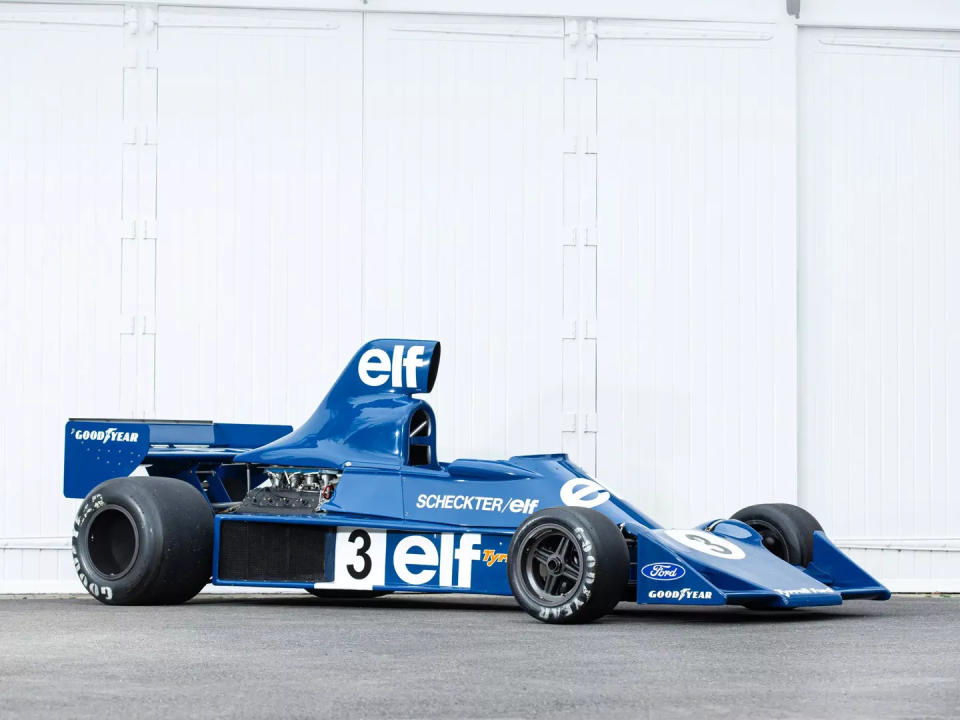
1971 Merlyn Mk21 F3
Estimate $37,000 - $60,000 No Reserve
Scheckter campaigned this car in the 1971 Formula 3 season after making an impressive start in Formula Ford with another Merlyn, dubbed “Magic Merlyn,” a third-hand Merlyn Mk 11a (also part of the sale).
Scheckter was instantly competitive and placed third in his debut race and later claimed victories at Oulton Park, Thruxton, and Mallory Park. Competing on 12 occasions, Scheckter took three victories and three podium finishes, leading to a seat at McLaren for the 1972 season.
This car was completely restored and fitted a 1,600 cc Ford DBA inline-four engine in 1989. Scheckter bought it in 1999. That’s the period-correct Lucky Strike livery, btw.
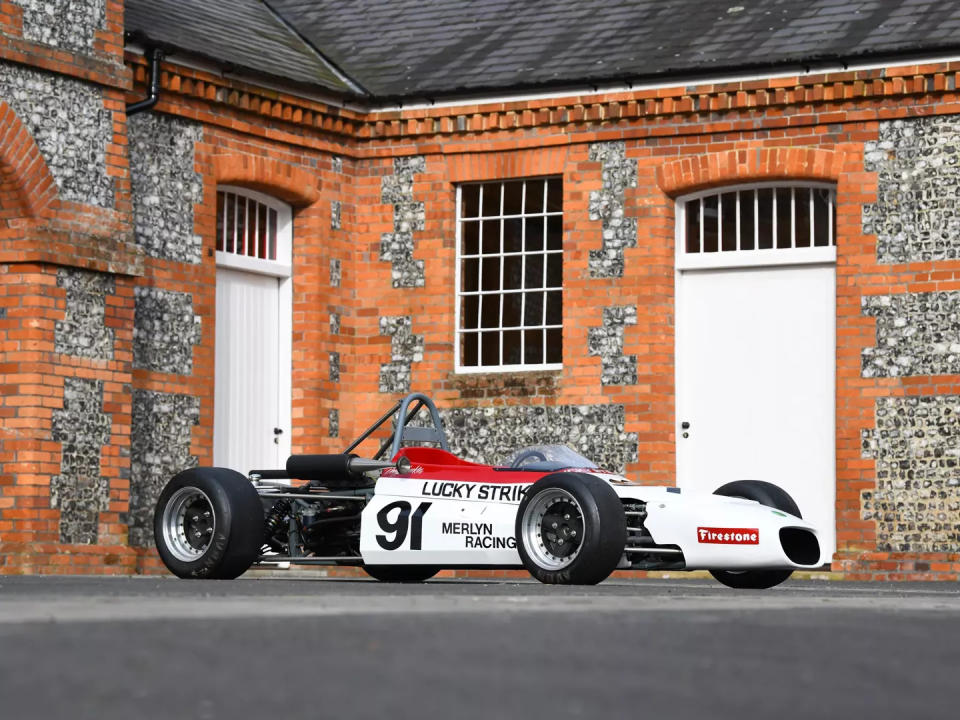
1969 Merlyn Mk11a
Estimate $48,000 - $69,000 No Reserve
While Formula Ford was growing in popularity, the likes of Colin Chapman and Jack Brabham sought to capitalise by developing race cars to sell and compete in this new category. Selwyn Hayward, founder of Colchester Racing Developments—a company that produced and sold Merlyn race cars—decided to follow the competition and design a car for the Formula Ford series.
In 1968, the Merlyn Mk11 was instantly competitive, with Tim Schenken claiming the BRSCC Formula Ford 1600 championship title that year. For 1969, this revised version dubbed the Mk11a was introduced. This 11a was raced by a young Brazilian named Emerson Fittipaldi, who was so successful that he quickly moved up to Formula 3.
In 1971 Jody Scheckter acquired it, having impressed in the Formula Ford Sunshine Series in South Africa, and winning the ‘Driver of Europe’ award that year. In his debut at Brands Hatch, he nearly claimed 1st place, but spun out while he was leading and finished in second.
Scheckter continued to show how competitive the “Magic Merlyn” was, claiming pole positions, victories, and podium finishes—but also spinning out on several occasions. He moved up to Formula 3 and sold chassis 238, and it eventually wound up in the garage of Californian publisher Paul Pfanner, who in turn had John Bright restore the car. Pfanner used this Merlyn in various historic events in the US until he sold the car back to Jody Scheckter in 1997.
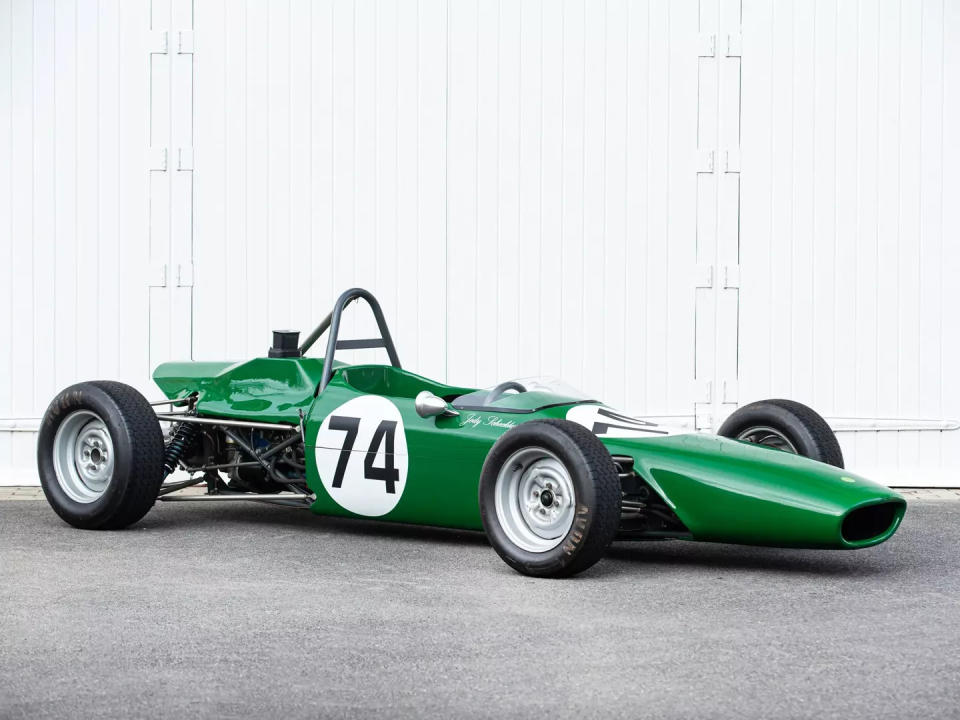
1974 Trojan T101 F5000
Estimate $70,000 - $100,000 No Reserve
Scheckter made his grand prix debut in 1972 but would not race full-time in F1 for another two years. During those two years he raced in SCCA L&M Formula 5000, starting in 1973. F5000 used large-capacity V-8s and well-developed tires that gave Scheckter valuable experience he would later apply to F1.
This 1974 Trojan T101 F5000 used design aspects of the McLaren M21. In it, Scheckter finished second in the opening round of F5000 at Riverside before winning the next three events back-to-back at Laguna Seca, Michigan, and Mid-Ohio. In that series Scheckter beat the likes of Brian Redman and Mark Donohue.
This 1974 model was the last of the six T101s constructed. It was restored in 1988. Scheckter bought the car in 1999. It wears the “Winston Delta Tires” livery and the race number #0 from his 1973 run to F5000 championship glory.
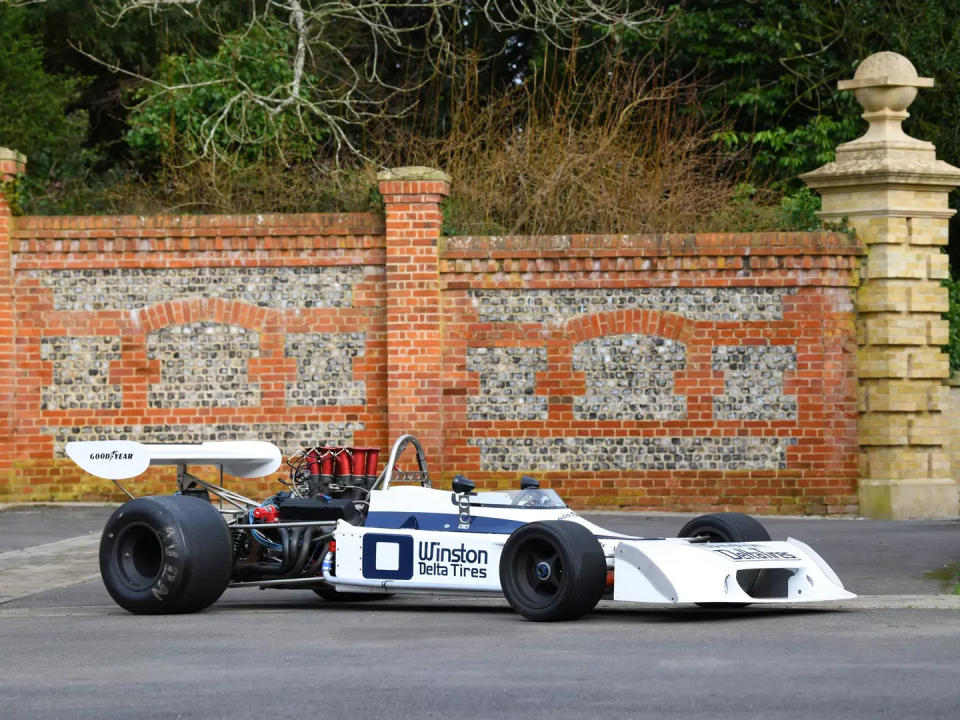
1973 Rondel Motul M1
Estimate $70,000 - $107,000 No Reserve
The Rondel name is a combination of Formula 2 race team and car constructors Ron Dennis and Neil Trundle. While Trundle went on to become chief mechanic for Ayrton Senna, Dennis went on to, well, you know. With backing from French oil company Motul, ex-Brabham mechanics Dennis and Trundle remarkably started making their own cars within two years of setting up. The first creation was the M1.
Penned by aerodynamicist Ray Jessop, a fellow Brabham alumnus, the M1 was designed with an aluminum monocoque stronger than rival cars. This 1973 car, chassis 204, was the fourth of nine M1s built at Rondel’s Feltham, Middlesex workshop. Reserved initially for “star guest drivers,” it made its debut in the European Formula 2 event at Hockenheim to contest the Jim Clark Memorial Trophy, in the hands of Jody Scheckter.
Scheckter would reunite with chassis 204 at Thruxton later in April, where he scored 4th place in the opening bout—a race won by Henri Pescarolo to give Rondel its first-ever victory. Then in June, the car was handed over to Welsh rising star Tom Pryce, who finished fifth at Hockenheim and seventh at Rouen.
The car later saw many seasons of continuous racing in North American single-seater categories. This car was fully restored in Switzerland and wears period-correct baby blue livery.
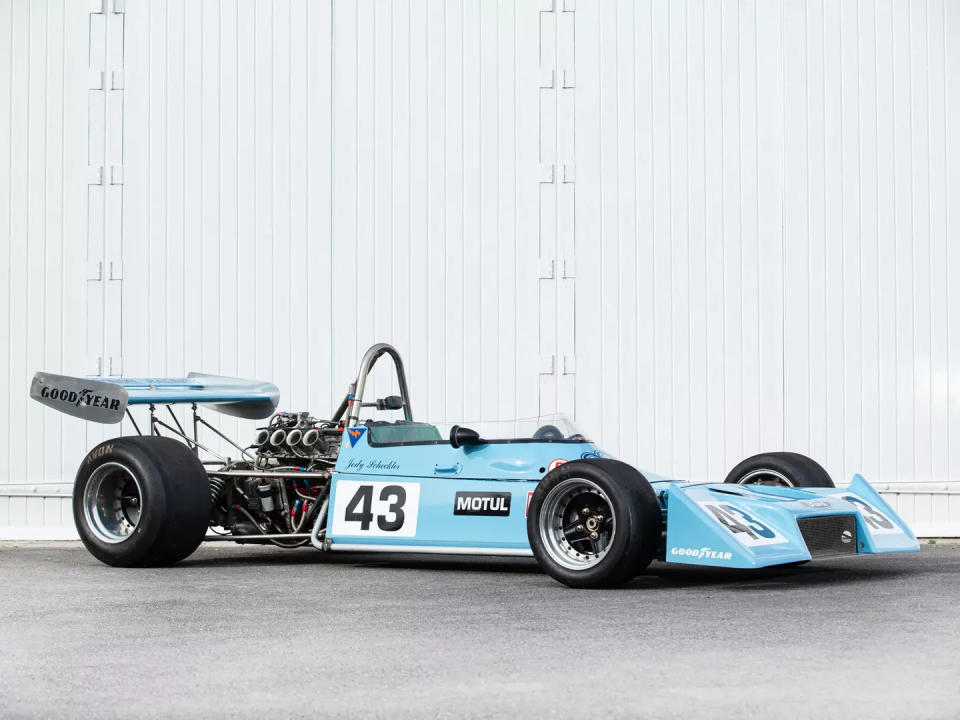
1977 Wolf WR1
Estimate $480,000 - $700,000
Wolf Racing was only active in F1 for a couple years. This
WR1 is their first car, but it was constructed by a remarkable team that included designer Harvey Postlethwaite, Patrick Head, and a young machinist named Ross Brawn. The car won its first F1 race. Among its many parlor tricks was that it could change its wheelbase for different circuit configurations.
Into that brilliant car the team poured Jody Scheckter. Scheckter immediately repaid Wolf’s faith in him at the first round of the 1977 Formula 1 World Championship with a win at the Argentine Grand Prix, a remarkable achievement for the small team. Further wins were clinched at Monaco and at the Canadian Grand Prix.
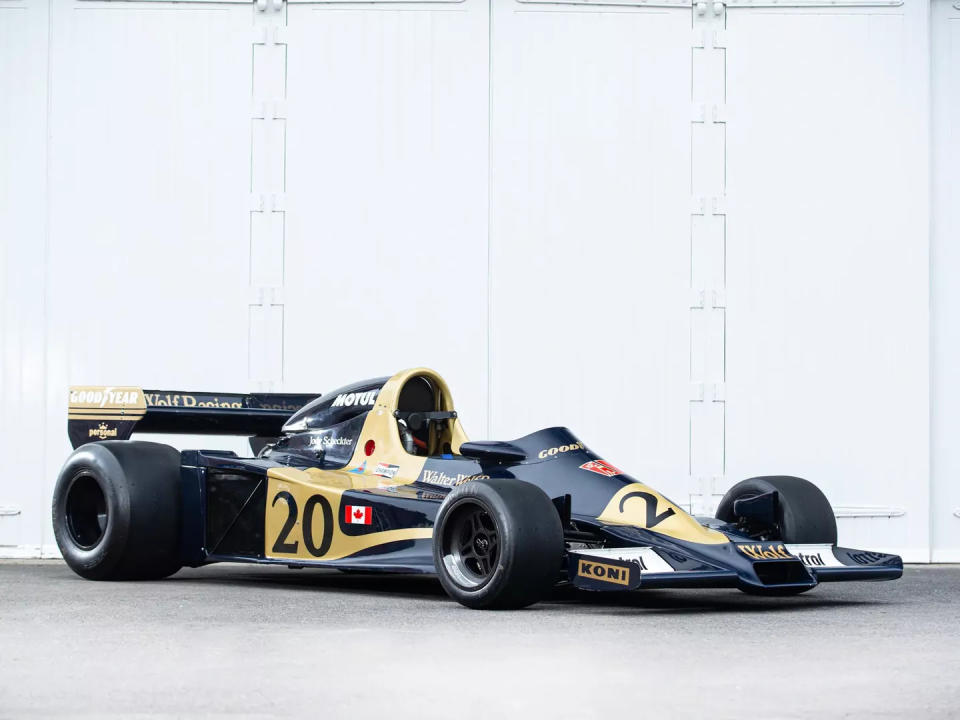
1960 Alfa Romeo Giulietta SZ
Estimate $350,000 - $480,000
Jody Scheckter isn’t selling just track cars. Even a world champion likes somewhat more ordinary cars once in a while. Not that the Giulietta SZ is ordinary.
Alfa Romeo and Zagato came together to produce this SZ version of the Giulietta in 1960. The recipe made for a highly competitive race car in a street-looking body. This Giulietta finished 14th overall in the 1961 Targa Florio and competed in a number of other races throughout Italy in its day. This one was restored in 2000 and raced at the Goodwood Revival.
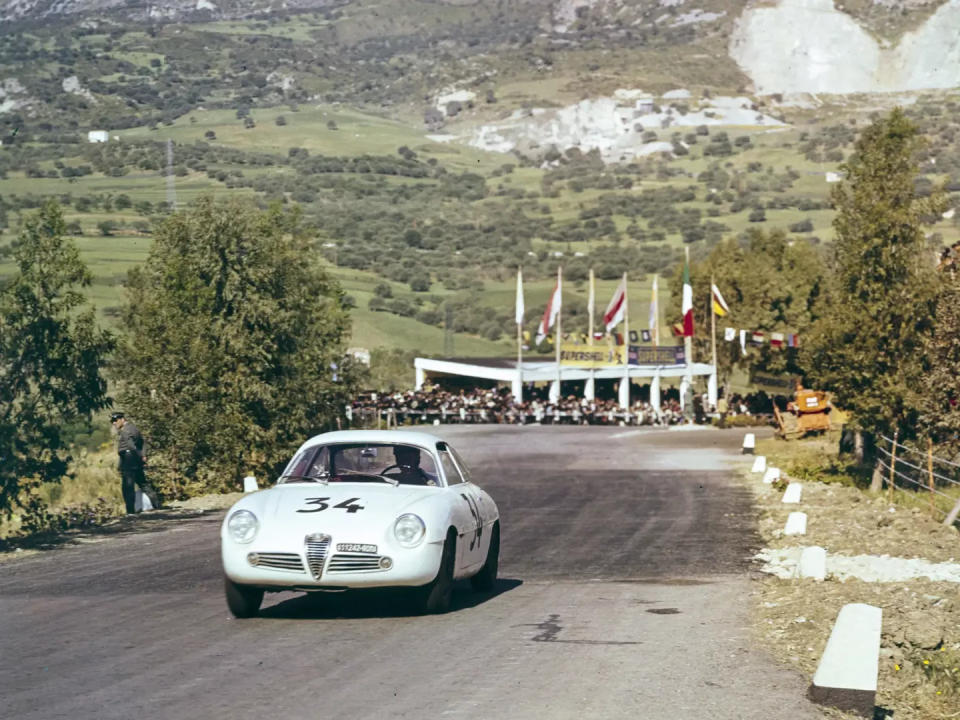
1958 Lancia Aurelia B20 Coupé Series VI by Pininfarina
Estimate $85,000 - $130,000
Okay, we are out of the Jody Scheckter cars and into our favorites from the rest of the Monaco auction. Consider this Lancia Aurelia B20. Among enthusiasts, the B20 is considered a gem of the always-innovative Lancia marque.
It was developed by the great Vittorio Jano, responsible for some of the greatest cars ever to turn a wheel, from the Alfa P3 and Lancia D50 Grand Prix car, to V12 and V6 engines used in numerous Ferraris, including the iconic Dino.
The 2.5-liter alloy V6 in this Aurelia B20, one of the first series-production V6s ever, featured a single camshaft operating both banks of cylinders. It makes 112 hp from a single Weber 40 DCL 5 carburetor. Large inboard-mounted drum brakes were close in specification to that of the larger Flaminia, which came after it. Good examples of B20s can easily get well into the six figures.
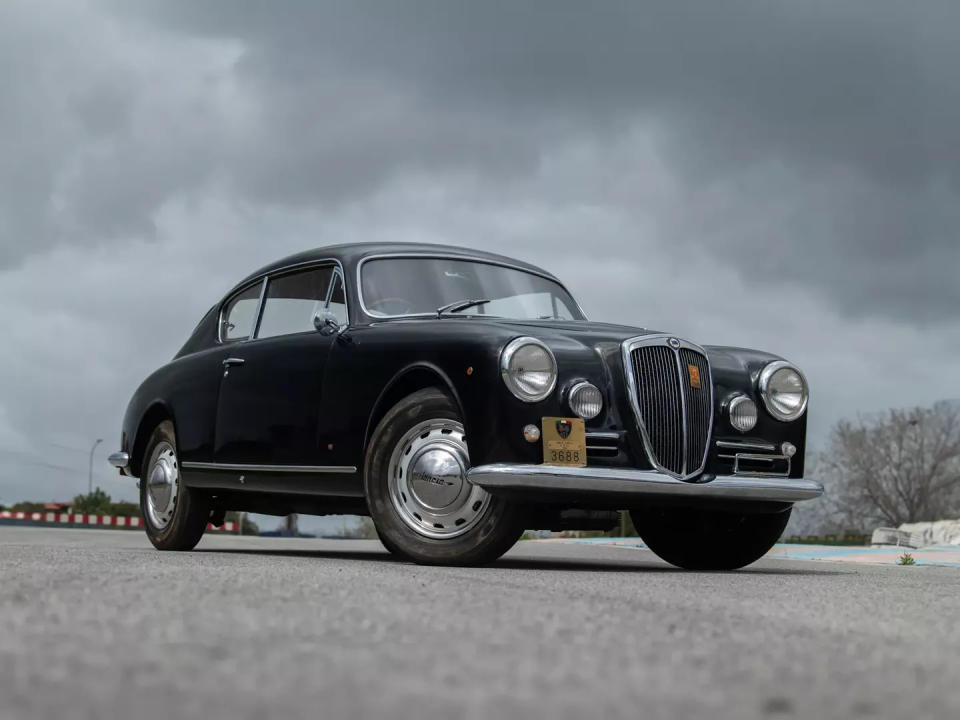
1949 Alfa Romeo 6C 2500 Passo Corto Super Sport Cab
Estimate $425,000 - $535,000
One of the great collector sports cars of all time, the Alfa 6C was made in one form or another from 1928 all the way up to 1952. This 1949 2500 Passo Corto (short wheelbase) is an SS, or Super Sport. It rides on independently sprung suspension and is powered by the larger 2.5-liter straight six. Like many great classics over the years, many of the 6Cs were handed over to coachbuilders for their bodywork. This one was sent to Pinin Farina (two words at the time) and received the cabriolet body you see here.
It was ordered new by the famous Italian sugar company Eridania Zuccherifici Nazionali. When it was first sold 75 years ago it cost 4.4 million Italian lire. "Mama mia," you say, but that worked out to about $22,000 US. Nonetheless, at the time it was a lot of money.
This 6C is an extremely well-preserved example, RM Sotheby’s says, retaining its original interior, and has always remained in Italian ownership. Even today it still sports its original Genoa registration number. The bodywork shines in Bordeaux paint, contrasted by a beige convertible soft top and an oxblood leather interior. Offered with RIAR and ASI homologation papers as well as a Certificate of Origin from Alfa Romeo, upon inspection it has been confirmed that chassis 915783 retains its matching-numbers engine.
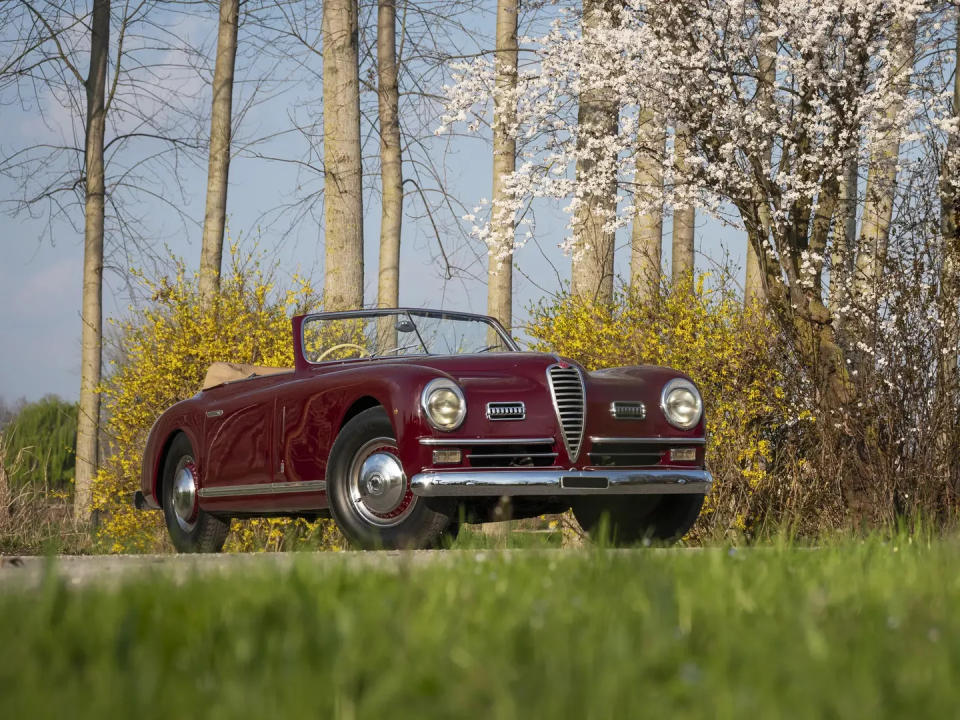
2022 McLaren Elva
Estimate $1,200,000 - $1,600,000
The McLaren Elva is a beautiful but ultimately funky thing. It has no windshield, meaning that when you drive it, unless you’re wearing a really good full-face helmet with the visor down, a single rock chip could slice your head clean off. That might explain why the current owner has put only eight kilometers on it.
The Elva sits on the same basic Monocage III central structure as the Senna and the 720S but gets its own carbon-fiber body and interior. The interior is as wavy and alluring as the exterior, with a unique upholstery pasted on the carbon-fiber seats. The instrument panel sits on the adjustable steering column so you never lose sight of the gauges.
As we said when we saw one parked at a mansion in the Hollywood hills, “There is no windshield, windows or roof... (so) wear a full-face helmet. I’ve recently driven a Vuhl and a Slingshot and a long time ago I drove a Renault Sport Spider, none of which have windshields, and I can tell you, your face will thank you.”
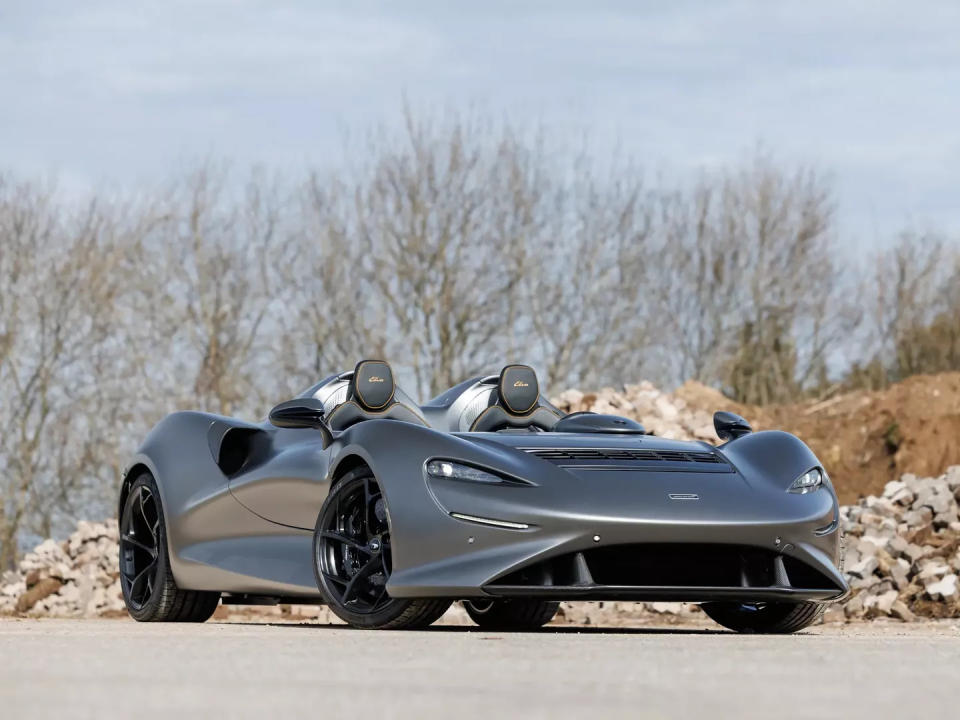
1969 Lancia Fulvia Coupé Rallye 1.6 HF 'Fanalone'
Estimate $54,000 - $75,000
The Fulvia was Lancia’s great rally car before the mighty and all-conquering Stratos. At the peak of its evolution in 1974, the 1.6-litre HF (High Fidelity) Squadra Corse gave Lancia multiple European Rally Championship races from 1970 to 1972. It won the International Championship for Manufacturers in 1972 and a second Makes title in 1974 in the revamped World Rally Championship.
And it did it all driving the front wheels.
The Rallye 1.6 HF originally made only 114 horsepower with a 10.5:1 compression ratio. But 135 brake horsepower (and later 165 brake horsepower) was soon possible thanks to larger twin 45-millimeter carburetors, new camshafts, and higher-compression pistons.
Nicknamed “Fanalone” owing to its larger-than-standard inner-spotlights, this particular 1.6 HF had extensive restoration work performed. Ask anyone who has owned or even driven them, and they will surely praise them.
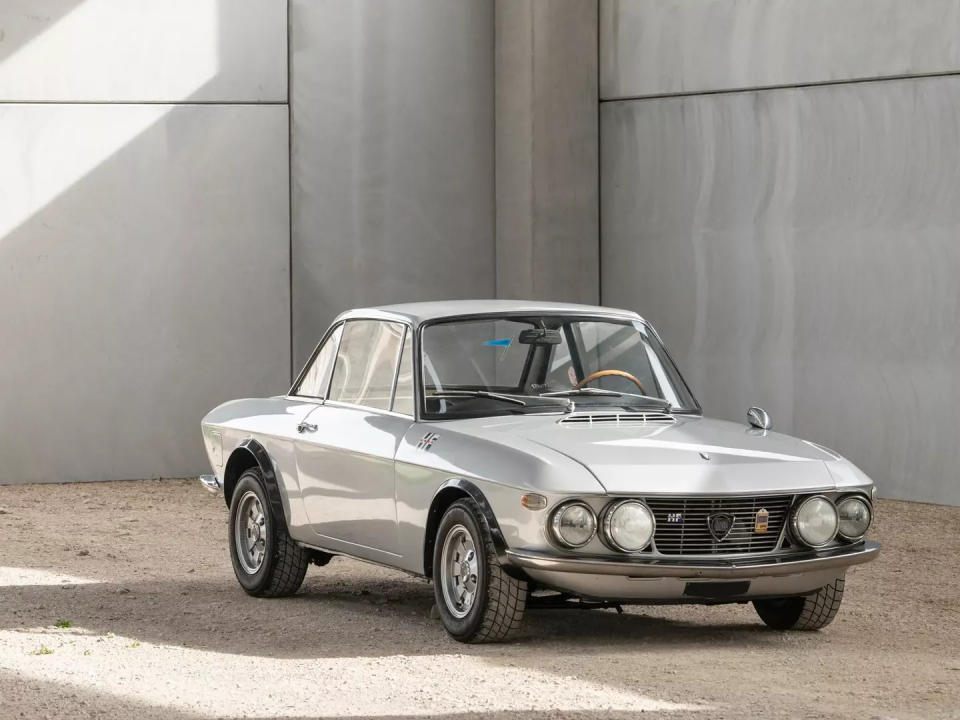
1957 Alfa Romeo Giulietta TI Berlina by Bertone
Estimate $32,000 - $43,000
The Giulietta is the darling of a certain subset of sports car-racing aficianados. It also powered Alfa Romeo’s economic recovery in the post-war period. Launched in 1957, the Giulietta TI—or Turismo Internazionale—shown here, added 12 horsepower thanks to increased compression and a twin-choke downdraft carburetor to the already potent 1,290-cc twin-cam four-cylinder. It can hit an impressive (for the time) top speed of 95 mph.
This example left Alfa Romeo’s Portello works on December 16, 1957, as one of just 1,268 built during the first year of TI production. The Giulietta TI Berlina quickly made a name for itself in motorsport—a reputation that stayed with the model throughout its life. This particular car would eventually be prepared for historic racing in the 1990s and competed from Vallelunga and Zandvoort to Donington Park.
At one point it was owned by former Renault F1 sporting director Jean Sage, who oversaw more than $15,000 worth of improvements by marque specialist Autofficina Omega, including rebuilds of both the engine and gearbox. Sure, you could maybe find a cheaper example, but you'd have to pour big bucks into making it run like this one.
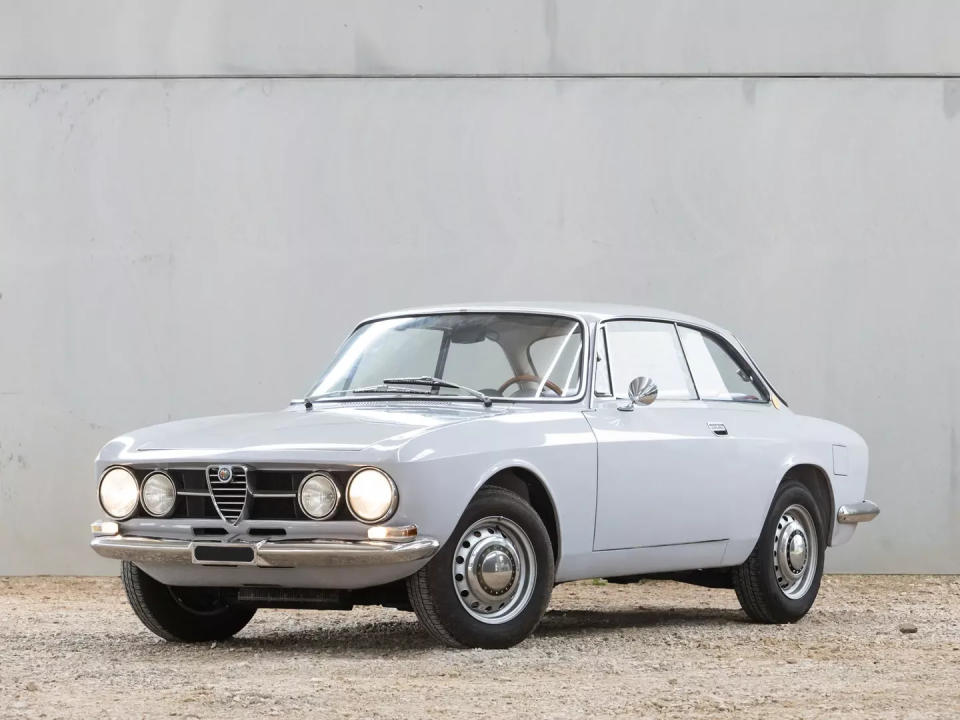
1975 Lancia Stratos HF Stradale by Bertone
Estimate $590,000 - $695,000
In its day the Lancia Stratos was the king of all rallying.
Based on Marcello Gandini’s wedge-shaped, mid-engined Stratos Zero concept car first shown in 1970, Lancia knew the concept would make a great rally car under Group 4 rules. Those rules stipulated race cars had to be based on production cars, and, luckily for the rest of the world, that meant 500 Stratos examples would be produced.
Ferrari provided the 12-valve, 2.4-liter Dino V-6, fitted transversely, and the recipe was complete. The result was three World Rally Championships—in 1974, 1975, and 1976, one Targa Florio, and five Tours de France, not to mention three editions of the Giro d'Italia Automobilistico.
This example was the 323rd of what might have been as many as 498 built. It is unrestored.
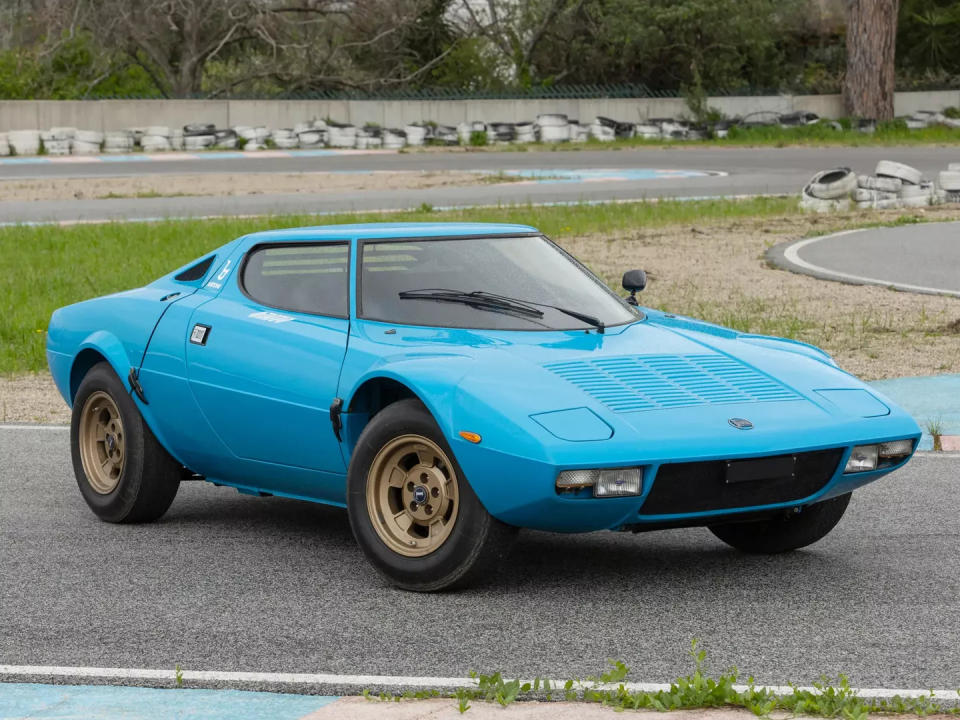
1981 Porsche 917 K-81
Estimate $3,750,000 - $5,350,000
If you looked at this just for a second you might think it’s a 962. But in fact it is a 917, the last one ever made, constructed by Kremer Racing, the last 917 to compete in the 24 Hours of Le Mans. Its final race was the 1981 Brands Hatch 1000 Kilometers, where it was driven by Bob Wollek and Henri Pescarolo.
This one was built 12 years after the last “real” 917 competed—the legendary 917/30 of 1973.
Here’s how it came about: As the FIA sought to transition to the new-for-1982 Group C ruleset, the existing Group 6 regulations were relaxed for the 1981 World Endurance Championship season to stimulate development of both new components and cars for the incoming formula.
Buoyed by an unlikely victory at Le Mans in 1979 with their self-developed Porsche 935-K3, the Cologne-based Kremer team sought to exploit such technical latitude by developing its own updated Group 6 version of the 917. It was a car that offered the team a realistic chance for a second victory at La Sarthe in three years.
Aided by intimate working knowledge of the 917 and invaluable design support from Porsche headquarters, Kremer set about updating the design to accommodate contemporary tire construction and aerodynamic practice. Dubbed the 917-K81, the new car featured a Kremer-built aluminum spaceframe chassis similar to that of the original, albeit with additional triangulation and thicker gauge tubing to improve torsional stiffness.
In addition, it featured brakes, suspension components and other items of running gear developed on the all-conquering Can-Am program. The brakes were developed over 1972 and 1973 to meet the requirements of the 917/10 and the 917/30, which weighed in at more than 2535 pounds (fully laden) and whose turbo-compressed engines produced up to 1,100 hp.
The car didn't do well at its 1981 Le Mans debut, retiring after many troubles. But with better gearing and improved aerodynamics it led at Brands Hatch before retiring with suspension problems.
It has been driven at various track days since then. An unusual footnote in the race history of a great car.
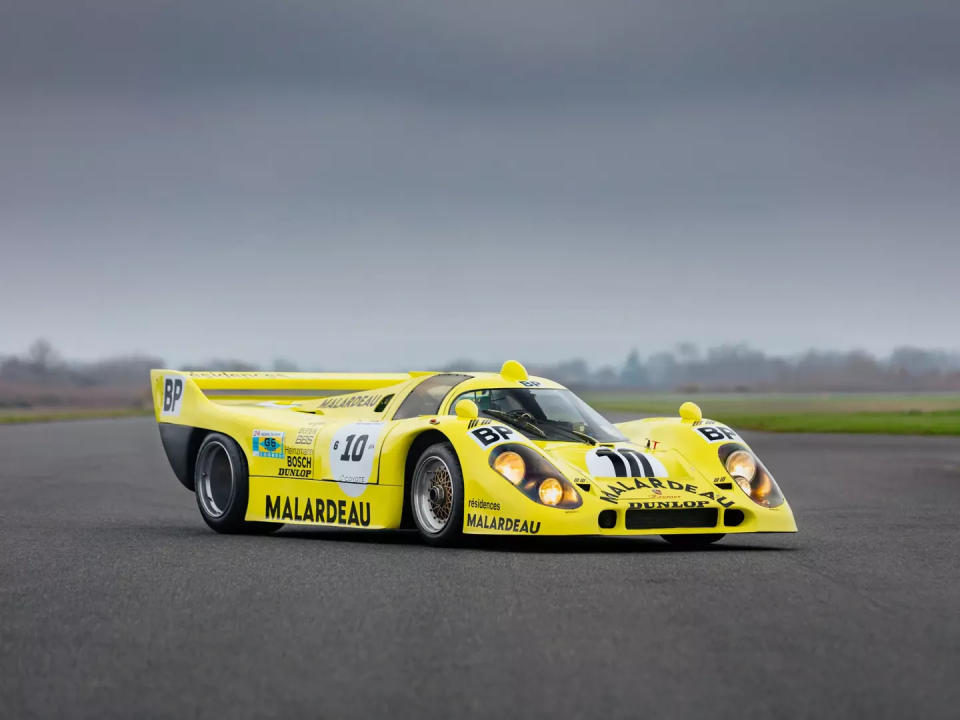
Arova-Porsche 212 Skibob
Estimate $2700 - $4250
And finally, what collection would be complete without an Arovo-Porsche Skibob?
Porsche partnered with Arovo to make this contraption in 1970. You sit on it while your feet are strapped into short skis, which come with the model 212. What could possibly go wrong?
While RM Sotheb's lists the expected price at between $6000 to $8000, a European site last year had one on sale for 172 Euros.
